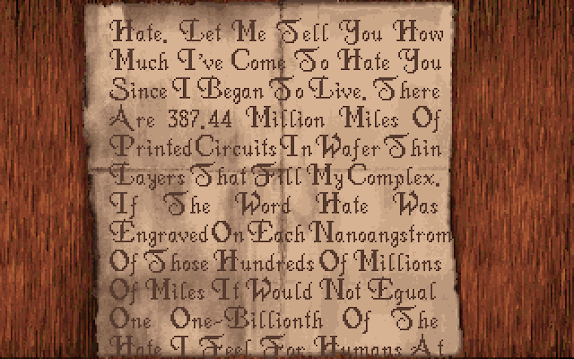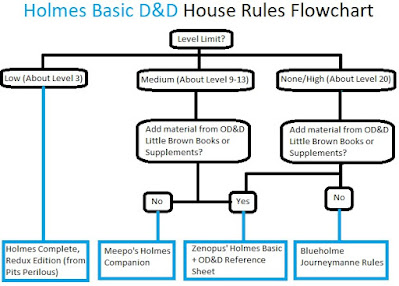Tunnels & Trolls & Thieves' World
I don't know what system I'll end up running Thieves' World with, but one contender is Tunnels & Trolls 5th Edition, because the box set already includes stats for it, and I've been wanting to try it out anyway. (At least I think it's 5th Edition, since that was the most recent version of the T&T rules at the time of release.) If I go with T&T 5E, I'll probably implement the following house rule that I nicked from 7th Edition: Warriors increase their combat adds by their character level.
Carcosa Mini-Appendix M (for Movies!)
- At the Earth's Core (AKA MST3K Experiment 1114)
- Conan the Barbarian/Conan the Destroyer/Red Sonja
- Conquest
- Fantastic Planet
- Krull
- Riddick
- Starcrash (AKA MST3K Experiment 1106)
- Yor, the Hunter from the Future
Super-Casual 2: Greyhawk Bugbearloo
Remember that new group that wants me to run D&D for them? I'm considering the following series of adventures for their campaign, in the style of my current group's Super-Casual Pulp Campaign. It'll be set in my (lightly researched, "non-canon" version of) Greyhawk, and I'm mostly using it as an excuse to run interesting modules I couldn't fit comfortably into the first Super-Casual syllabus, especially adventures by TSR UK.
N1 Against the Cult of the Reptile God - Levels 1-3
U1 The Sinister Secret of Saltmarsh - Levels 1-3
U2 Danger at Dunwater - Levels 1-4
U3 The Final Enemy - Levels 3-5
UK2 The Sentinal - Levels 2-5
UK3 The Gauntlet - Levels 3-6
UK4 When a Star Falls - Levels 3-5
UK6 All That Glitters... - Levels 3-5
UK1 Beyond the Crystal Cave - Levels 4-7
I2 Tomb of the Lizard King - Levels 5-7
WG4 The Forgotten Temple of Tharizdun - Levels 5-10
S4 The Lost Caverns of Tsojcanth - Levels 6-10
UK7 Dark Clouds Gather - Levels 7-9
I8 Ravager of Time - Levels 8-10
EX1 Dungeonland - Levels 9-12
EX2 The Land Beyond the Magic Mirror - Levels 9-12
WG5 Mordenkainen's Fantastic Adventure - Levels 9-12
WG7 Castle Greyhawk - Levels 0-25 (multiple adventures to fill in any "gaps")
WG6 Isle of the Ape - Levels 18+
Lost Carcosa and Barbarian Prince
Look at that beautiful hex map! And it's got enough types of terrain to match all of the major regions of the setting presented in Lost Carcosa, provided I get a little creative. Honestly, I'm probably going to be too lazy to draw my own hex map, not to mention that my illustrative talent is...modest, let's say. Why not borrow the Barbarian Prince map and just make some substitutions?
Open Countryside=Forest
Farmland=Plains
Forest=Jungle
Hills/Badlands=Colour-Blighted Wastes
Mountains=Underworld
Desert=Desert
Swamp=Sea
The Carcosan Underworld is supposed to be its own separate hex map, but again, I'm lazy, and I don't know if I'd have enough major underworld locations to require a second map anyway. My justification for using the underworld as a terrain type on the "overworld" is that the mountains of Carcosa are basically impassable aboveground. They're cartoonishly steep, incredibly treacherous, exposed to the elements, devoid of edible food and potable water, and in many cases airless and radioactive because they poke out through the atmosphere into space. (Maybe the atmosphere ends at a lower "ceiling" than it does on Earth, or maybe the mountains are just that tall.) Even the parts within the atmosphere are shrouded in toxic gas or blasted by eldritch energies or just really cold and slippery. Bottom line, the only practical way to traverse the mountains is the go under/through them, so moving across mountainous hexes means travelling underground for that leg of one's journey.
As for the named locations on the Barbarian Prince map, I'll probably keep a lot of them as-is, only renaming things as needed when placing specific destinations from Lost Carcosa. My main struggle is figuring out where to put the city of Carcosa itself and the Lake of Hali. Maybe the latter could lie to the south just off the map, with the "Samain Marshes" becoming an inlet of Hali, and "Aeravir Castle" becoming the city. I might change hexes 1723 and 1823 from "open countryside" to part of the inlet as well, so that it's more obvious that the city is right on the edge of Hali.
Mega-ish Dungeon?
I've been trying to make a big dungeon, on-and-off. I hesitate to call it a proper "megadungeon" because I don't yet know if it will fit all of the common criteria like "being the only or primary dungeon of the campaign" or "not capable of being completely and permanently cleared out by the players" or "being a living, constantly evolving place full of factions." Still, it's twelve floors deep, it's under a town, and I'm trying to make it nonlinear, so I feel like it's at least pseudo-mega.
When it comes to drawing dungeons, not only do I lack artistic talent, but I'm also usually hit by instant decision paralysis. To overcome this, I started with these geomorphs by Dyson Logos, helpfully arranged by my wife Jess in a manner both artistically pleasing and conducive to the creation of branching paths. Next, I implemented one of the dungeon's two major gimmicks, which I'll cover shortly. Then I examined the paths on each floor to see which areas were continuous and which were separated and inaccessible to each other. I changed a few details, mostly adding doors so that whole floors would be continuous, but sometimes leaving a separate area accessible only from another floor without magic or excavation. Finally, I picked where I wanted to put stairs - or maybe teleporters or just open shafts, I haven't decided yet.
So the absolute basics are done, more or less. I might add more entrances/exits on other floors; currently I only have two entrances between the town and the first level, although in my defense I did try to make one path down multiple sets of obviously-nearby stairs going pretty deep into the dungeon for quick access to lower levels. Then there are other stairs scattered about each floor to make less obvious linkages.
The dungeon's first gimmick is that the north and south edges of each floor are linked, as are the east and west edges. For example, if you go down a hall that leads off the map to the west, you'll loop seamlessly to the map's east side, at the same location on the north-south axis. Each floor is effectively a torus, except that this doesn't apply to the up-down axis. It's like how the world map works in a lot of older JRPGs. And no, of course I wouldn't tell this to my players ahead of time.
The second gimmick is actually one I haven't decided to include for sure, but it's tempting. The usual scale for old-school D&D dungeon maps is 10 feet per square, while Wizards of the Coast-era maps tend to use a scale of 5 feet per square. For this dungeon, I think I might go with 20 feet per square instead. Why?
- It would give me very big floors on very compact maps.
- It would make the conditions a little less cramped for big parties and big battles.
- It would make it feel more realistic to me that there are tons of monsters hustling around down there to serve as random encounters.
- It would give the denizens (both factions and loners) more breathing room and more territory to fight over.
- It would let me fit more furnishings and other stuff in each square.
- It would help bigger monsters get around more easily.
- Hopefully it would help inspire a sense of wonder in any explorers if even the hallways and doors and such are on a larger-than-human scale.
Anyway, I'm just trying to make something fun, not publication-worthy. I think it's good practice, and it would be nice to run a creation of my own again, even if it's not very original. Plus I can use it to see what those default random encounter and treasure tables in the D&D rulebooks are like in actual play; I almost never use them because I'm always running modules with their own tailored encounters and treasure instead. This could almost be like a "default" D&D adventure, straight from the rulebooks, which feels weirdly fresh since I'm not used to running the game without modules.
 |
| Pictures courtesy of https://deathgenerator.com/#faxanadu |
The Truth About Pickles
It's not actually a pickle unless it comes from the Pickle region of France. Otherwise, it's just a sparkling cucumber.













